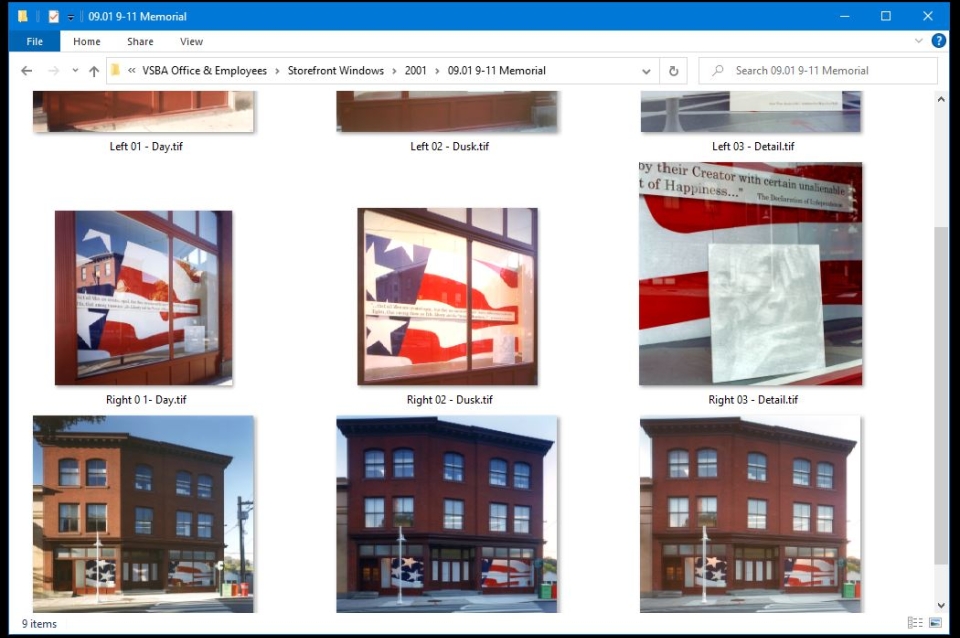April 13, 2021
Architectural Archive's year of COVID

Image of decorated storefront at the VSBA office building in Manyunk. This design is a memorial to the victims of 9/11, from fall 2001.
Stuart Weitzman School of Design
102 Meyerson Hall
210 South 34th Street
Philadelphia, PA 19104

Image of decorated storefront at the VSBA office building in Manyunk. This design is a memorial to the victims of 9/11, from fall 2001.
Like the rest of the world, the Architectural Archives closed to the public last March, and the staff began to work remotely. By the summer, we were back on site, but only part time and with very limited researcher access. This has required us to shift the way we work and create new ways to interact with the collection and bring a renewed focus toward digital projects.
The Architectural Archives has always done ‘Tabletop tours’ where we work closely with faculty to create specific educational experiences for college classes. Normally, these happen in person with classes crowded around our reading room tables, interacting with collection objects. With most classes remote, the Archives needed to create the same engagement online. Bill Whitaker, Curator, has creatively reworked some of the tours, finding ways beyond PowerPoint to connect students with our collections. For example, for a University of Pennsylvania architectural detailing class, Bill Whitaker filmed a tour of the Fisher House, so that all 90 students could tour the house. Then, students came onsite in socially distanced small groups to view drawings.
In addition to our tours, we support in-depth research using our collections bringing new perspectives and discoveries. In pre-pandemic 2019, we had over 150 individual researchers work on-site with our collections to write dissertations, complete book projects, and plan for exhibitions. With limited ability to travel or allow on site research, we have had to up our remote reference game quickly. Normally, if research questions were in-depth, we would encourage the researcher to come onsite and work through the collections themselves. With travel restricted for an unknown time, we need to find ways to get some research information to scholars, so dissertations, exhibition and book projects are not stalled. This has required patience and understanding between the researcher and staff, with zoom interviews and many emails to tease out what they need and ways to get it to them. This has included scanning entire folders, tapping our network to see if other libraries and archives can help, and even mailing books.
The Archives has recognized the need to make our collection information searchable online and create a preservation system for born digital collections. Through persistent advocacy, we have worked with other archivists on campus to build systems that will make all our collections information searchable to the public and preserve born digital collections. The break from some of our public programming and onsite research gave us time to make a push on implementing these systems. Heather Isbell Schumacher (Archivist) has been compiling collections information on paper, word documents and excel sheets so that we can start adding it to ArchiveSpace as soon as it is available. Allison Olsen (Digital Archivist) has partnered with Penn Libraries and Penn Law Library to implement Archviematica and digital storage to start processing our inaugural born digital collection of Venturi Scott Brown materials.